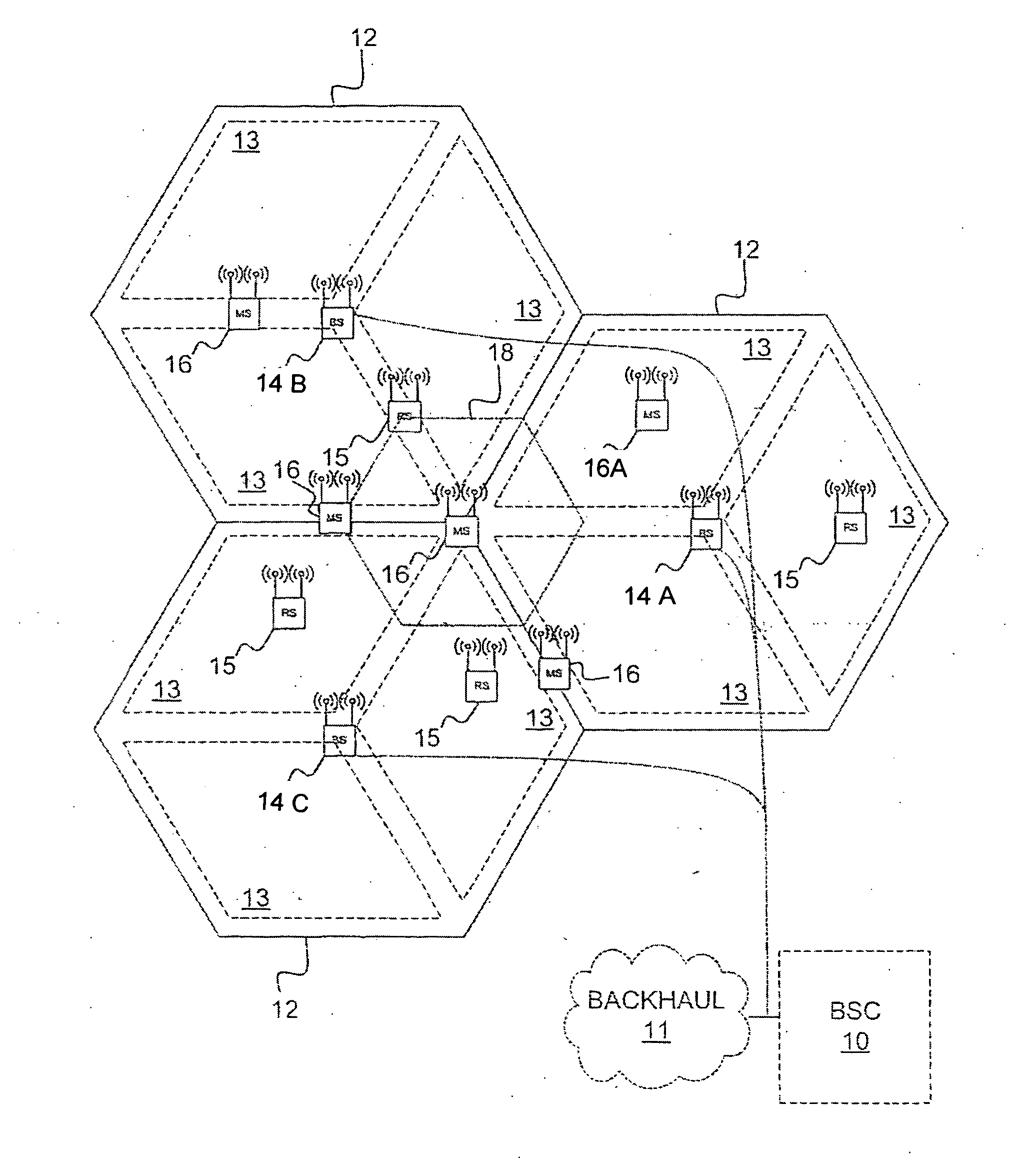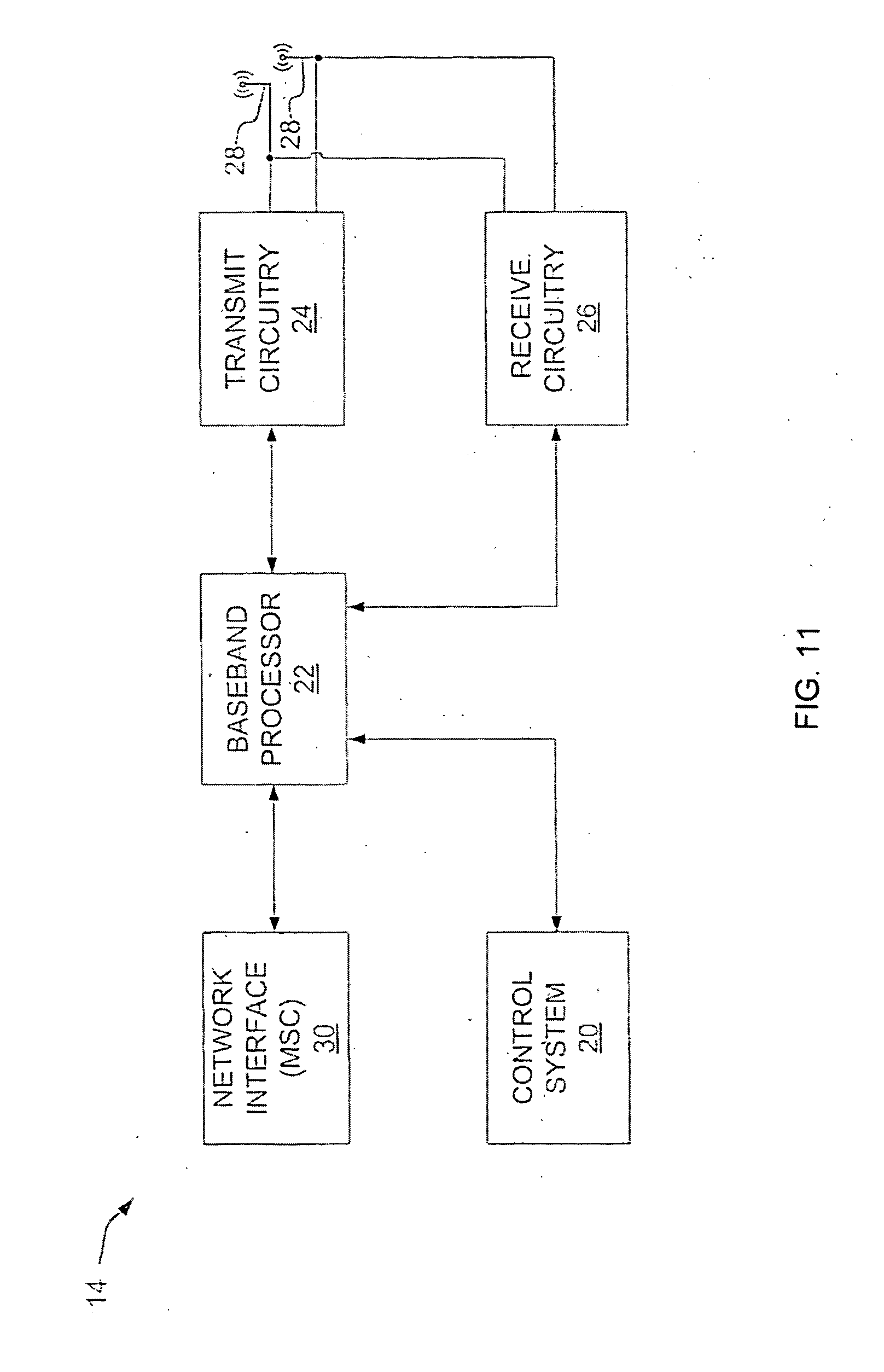Method and System for User Equipment Location Determination on a Wireless Transmission System
a wireless transmission system and user equipment technology, applied in the field of wireless communication techniques, can solve the problems of degraded signal quality, limited available spectrum for wireless services, increased interference in the system, etc., and achieve the effects of low cost, and improving neighbor cell hearability
- Summary
- Abstract
- Description
- Claims
- Application Information
AI Technical Summary
Benefits of technology
Problems solved by technology
Method used
Image
Examples
Embodiment Construction
[0034]Referring to FIG. 8, the block diagram shows a base station controller (BSC) 10 which controls wireless communications within multiple cells 12, which cells are served by corresponding basestations (BS) 14. In some configurations, each cell is further divided into multiple sectors 13 or zones. In general, each base station 14 facilitates communications using OFDM with mobile and / or wireless terminals 16, which are within the cell 12 associated with the corresponding base station 14. The movement of the mobile terminals 16 in relation to the base stations 14 results in significant fluctuation in channel conditions.
[0035]As illustrated, the base stations 14 and mobile terminals 16 may include multiple antennas to provide spatial diversity for communications. In some configurations, relay stations 15 may assist in communications between base stations 14 and wireless terminals 16. Wireless terminals 16 can be handed from any cell 12, sector 13 zone, base station 14 or relay 15 to ...
PUM
 Login to View More
Login to View More Abstract
Description
Claims
Application Information
 Login to View More
Login to View More - R&D
- Intellectual Property
- Life Sciences
- Materials
- Tech Scout
- Unparalleled Data Quality
- Higher Quality Content
- 60% Fewer Hallucinations
Browse by: Latest US Patents, China's latest patents, Technical Efficacy Thesaurus, Application Domain, Technology Topic, Popular Technical Reports.
© 2025 PatSnap. All rights reserved.Legal|Privacy policy|Modern Slavery Act Transparency Statement|Sitemap|About US| Contact US: help@patsnap.com



